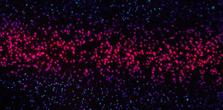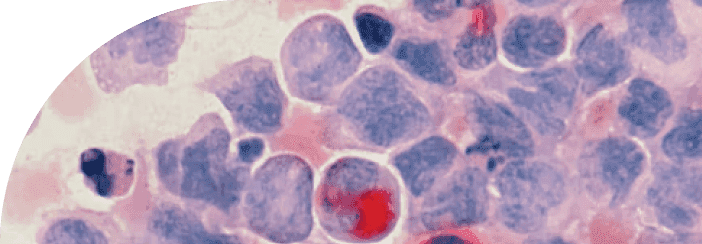
Rapamycin
The most powerful tool to stop the acceleration of aging caused by mTOR dysfunction and cellular senescence.
In our previous research review articles, we explored the intricate factors contributing to the aging process, with a specific focus on molecular pathways and underlying mechanisms. In this week's research review, we delve into the intriguing and paradoxical role played by DNA Damage Response (DDR) programming, which is crucial for maintaining DNA stability. However, with advancing age, the constant activation of this system can pose significant challenges to cellular health, leading to phenomena such as senescence, inflammation, and the onset of age-related diseases. We spotlight the research conducted by Qian, Zhou, Tanaka, and Takahashi, who have undertaken a comprehensive examination of the intricate interplay between protective responses and their paradoxical contribution to accelerated aging in later stages of life.
Cellular Senescence
15 mins
By: Shriya Bakhshi
In our previous research review articles, we have delved into the various factors behind aging, focusing specifically on molecular pathways and mechanisms. In this review, we will be taking a step back to look at the bigger picture. What really causes the molecular changes that occur with aging? A recently published paper in the journal, DNA Repair, has looked at one potential root cause: DNA Damage.
DNA is the instruction manual for everything in our bodies. Though resilient, it is vulnerable to various damaging factors. Just like a book, over time, its pages can get damaged. In response, our cells have developed the DNA Damage Response (DDR) system to ensure our DNA’s stability. However, constant activation of this system leads to cellular challenges, including senescence and its repercussions, such as inflammation and age-associated diseases.
In their recently published paper, authors Qian, Zhou, Tanaka, and Takahashi examined the complexities of this interplay between these protective responses that paradoxically accelerate aging later in life. Their work is crucial for understanding DNA damage and repair's role in cellular health, age-related diseases, and potential therapeutic interventions.
To fully grasp how our bodies respond to DNA damage, it is important to first understand how DNA functions in each of our cells.
DNA is a complex strand housed within the protective walls of each cell's nucleus. It is often hailed as the "blueprint of life." But it is more than just a blueprint, it is the master script, carrying the precise instructions that orchestrate everything from our eye color to our predisposition for certain diseases.
Each strand of DNA is a complex code, written with just four basic units called nucleotides - adenine (A), thymine (T), cytosine (C), and guanine (G). These nucleotides pair up in specific combinations (A with T, C with G) and wind around each other, forming the iconic double-helix structure. DNA is like a twisted ladder; its rungs are made of paired nucleotides.
DNA molecules are incredibly long and need to fit inside the tiny nucleus of a cell. That's where chromatin comes in. Chromatin is a complex structure that efficiently packages the DNA into a compact form to fit inside the nucleus. DNA achieves this compact packaging by wrapping itself around clusters of histones, forming structures called nucleosomes. Think of nucleosomes as beads on a string, with the DNA acting as the string and the histones as the beads. These nucleosomes are fundamental units of chromatin, and they not only help organize and compact the DNA but also play a crucial role in regulating which parts of the DNA are accessible and can be "read" by the cell, thereby influencing the activity of genes.
The DNA double helix is an iconic structure that many of us will remember from our science textbooks, but this structure is not just for show. The very shape of DNA ensures that genetic information can be efficiently stored, read, and copied during cell division. Yet, despite its design genius, DNA is not invulnerable.
Various internal and external factors can lead to DNA damage. Internal culprits include stress from DNA replication forks. These are sites where the DNA double helix is unwound during replication. Another internal threat is reactive oxygen species. These are unstable molecules produced during cellular metabolic processes that can harm DNA.
In contrast, external sources encompass elements like radiation from the sun and specific chemical drugs. Additionally, each cell undergoes spontaneous DNA damage events ranging between 10,000 to 100,000 times daily. [2]
Imagine spilling ink on a written page or tearing a section out—these are the equivalents of what we term "DNA damage."
Such damages in our DNA vary in scale and severity. A simple mismatch in pairing nucleotides, an added or missing base, can lead to small mutations. On the other end of the spectrum, when both strands of the DNA ladder break, the very stability of our genome is threatened. This damage is like a page being ripped in half—scientists call it a DNA double-strand break (DSB).
DSBs are potential time bombs. If not fixed correctly or just left as-is, our DNA code becomes unclear. This confusion can cause a cell to go rogue, potentially turning cancerous or leading to genetic disorders.
Luckily, our cells have a backup plan to tackle DNA Damage. The DNA damage response (DDR) is like a vigilant editor, constantly scanning for and fixing errors in the genetic script. This elaborate network of proteins and enzymes acts rapidly upon detecting DNA damage, either mending the issues or, in severe cases, triggering the cell to self-destruct, preventing the propagation of erroneous genetic information.
The DNA Damage Response is critical for tackling DSBs (Double-Strand Breaks). In this repair process, our cells use temporary modification tags to signal where repairs are needed. These tags are like small Post-it notes that guide the DNA Damage Response mechanisms on what to do and where to go. Once the job is done, these notes are taken off. [2]
The temporary modification tags serve as a beacon for two primary repair strategies: non-homologous end joining (NHEJ) and homologous recombination (HR). These are two distinct teams of molecular craftsmen, each with its own toolset and method for repairing the torn fabric of our DNA.
These repair strategies don't merely slap a patch on the DNA; they necessitate a delicate reshaping of the surrounding landscape. To fix breaks in DNA, the cell has to rearrange how DNA is packaged (think of it as adjusting the cloth around a zipper to stitch it back). This "packaging" involves structures including nucleosomes and histones. The repair process often requires changing nucleosomes to access the damaged area better.
Additionally, the proteins, or histones, that make up nucleosomes sometimes need to be chemically tweaked or modified to ensure that the repair is effective and that the DNA can function properly afterward.
The DNA Damage Response is a critical cellular process. It ensures that our body properly eliminates damaged DNA. [2]
To facilitate the DNA Damage Response (DDR), our cells place temporary modification tags on DNA, to ensure that the response targets damaged areas properly. These modification tags are removed once the damage is repaired. But as cells age, the temporary modification tags placed to signal damage may stick around for good, becoming a permanent feature on our DNA.
One such tag is γH2AX. Normally, γH2AX acts as a beacon or marker at the site of DNA damage. It accumulates around the damaged area, signaling other repair proteins to come and fix the DNA. Think of it as a flare from a damaged ship, calling for repair crews.
But as cells age or become exposed to various stressors, there is an increase in γH2AX as it marks damaged sites. The increased presence of this marker leads to an overactive DNA Damage Response (DDR).
These persistent high levels of γH2AX in cells and associated DDR activity are associated with a failure to repair all the DNA damage effectively. A chronically activated DDR leads to damaged DNA remaining unrepaired.
Here is the dilemma: The DNA Damage Response (DDR) is a frontline defense against mutations that could lead to cancer. But when DDR becomes chronically activated due to persistent DNA damage and aging, it leads to damaged DNA remaining in our cells. In the next section, we will dive into how this impacts our bodies at the cellular level.
The integrity of our DNA is critical for our bodies to function properly. Therefore, the DNA Damage Response is not the only failsafe mechanism built into our cellular programming.
When DNA damage occurs and cannot be repaired through the DNA Damage Response, our cells have a built-in "self-destruct" button that allows the body to eliminate the damaged cell. This process is known as apoptosis. However, despite experiencing damage, some cells do not receive the biochemical signals that trigger apoptosis. So what do they do?
A second backup is built into our cells; think of it like a backup generator. When apoptosis fails, cells can become senescent. Senescent cells have permanently exited the cell division cycle, meaning they no longer divide or reproduce. This natural protective mechanism prevents the propagation of damaged cells (which could lead to cancer).
Despite its beneficial role in preventing the spread of damaged cells, cellular senescence significantly impacts aging. As we age and accrue DNA damage, the number of senescent cells in our body increases, as does the size of senescent cells. As senescent cells grow larger, there is an abnormal increase in their function. Scientists refer to this abnormal activity as hyperfunctionality.
Hyperfunctionality in senescent cells can lead to inflammation, tissue dysfunction, and many age-associated diseases such as neurodegenerative disorders, heart disease, osteoporosis, cancer, and metabolic dysfunctions. In previous research review articles, we have deeply analyzed cellular senescence and its role in aging, but now we are trying to look at the bigger picture- to understand how DNA, the master coder of our body, plays a role in the aging process. [1]
When cells become senescent, they don't just become inactive bystanders. They undergo significant changes in their behavior and function, notably by releasing a cocktail of molecules known as the SASP (senescence-associated secretory phenotype). This mix includes inflammatory signals, growth signals, and enzymes that break down proteins. While SASP has beneficial roles, such as aiding in tissue repair, its persistent secretion can be detrimental. The chronic inflammation induced by SASP can alter the tissue environment, making it more prone to diseases like cancer and contributing to aging.
While the DNA Damage Response (DDR) is crucial for maintaining genetic stability, its chronic activation with aging has profound implications, particularly in influencing the SASP:
Gene Expression Changes
: When DNA damage continues over time, and DDR remains active, it can influence the gene expression patterns within the cell. This means that the cell starts "reading" and "acting" on different instructions from its DNA. One of these altered behaviors is the increased secretion of specific molecules that are part of the SASP. In other words, the prolonged presence of damaged DNA nudges the cell to churn out a unique cocktail of molecules that can lead to inflammation.
DNA Fragments and Inflammation
: During prolonged DDR, if DNA repair processes are not entirely efficient, small fragments of DNA can break off and accumulate in the cell's cytoplasm (where they do not belong). Usually, DNA is confined to the cell's nucleus, so its presence in the cytoplasm is considered abnormal. The cell might interpret these fragments as evidence of a viral infection or other foreign invasion. This misinterpretation activates the cell's innate immune response, increasing inflammation.
Activation of Pro-inflammatory Pathways
: Beyond just the presence of DNA fragments, DNA damage itself can activate specific cellular signaling pathways that boost the production and release of SASP components. Notably, the nuclear factor-kappa B (NF-κB) pathway, a principal regulator of immune and inflammatory responses, can be activated in response to DNA damage. When activated, NF-κB further amplifies the production of inflammatory SASP factors.
The intertwining of DDR and SASP has notable implications for the cell and the surrounding tissue environment. First, it can lead to chronic inflammation. As cells persistently secrete SASP factors, they create an environment of chronic inflammation. This is not just localized; neighboring cells can get affected, leading to a chain reaction and potentially affecting tissue function. Over time, an environment rich in SASP factors can lead to tissue dysfunction, as chronic inflammation and other factors can impair the tissue's ability to function correctly and regenerate. The ongoing inflammation and tissue dysfunction enhance the risk of several diseases, including cancer.
In essence, while cells aim to prevent immediate harm through DDR, the long-term consequences of DDR's influence on SASP can harm tissue health and the organism's overall well-being. [2]
Chronic activation of the DNA Damage Response (DDR) can lead to changes in cells beyond just increasing the presence of SASP. The DDR can also influence the architecture of chromatin, the material within our cells that packages DNA.
DNA is wrapped in a compacted structure and packaged by chromatin in order to protect DNA from damage. But when damage occurs, chromatin's organization and compactness can be an obstacle to DNA repair. To facilitate repair, chromatin undergoes changes that remodel its structure, allowing damaged DNA sites to become accessible by repair proteins. Once the repair is complete, the chromatin complex returns to its original state.
Returning chromatin to its normal state after DNA repair has yet to be fully understood, but it involves various proteins and complexes. What is known is that as organisms age, there are notable changes in chromatin structure. All the moving, fixing, and rearranging can wear out the cell over time. Think of it as a book cover getting worn out over the years. Some parts that used to be tight and protective might become loose.
Transformations in the structure of chromatin can lead to DNA not being read correctly, ultimately impacting the cell's ability to function. This can lead to cell dysfunction, meaning the cell acts erratically and produces harmful substances. Dysfunctional cells release inflammatory signals and can lead to cellular senescence or, in some instances, cancer. [2]
Growing evidence suggests that DNA damage could be a primary driver of aging. The work of Qian, Zhou, Tanaka, and Takahashi looks at how DNA damage influences aging through its impact on cellular senescence, SASP, and changes in chromatin. While this research can open the doors for new approaches to target aging, several challenges and questions remain:
First, chromatin changes happen during DNA damage repair and other vital cellular processes. A big question remains: How much do chromatin changes contribute to aging?
Second, measuring spontaneous DNA damage and related chromatin changes in real time is challenging. More research is needed to solidify the connection between DNA damage repair, chromatin changes, and aging. Advanced analysis, imaging tools, and methods can help us better understand these processes at a detailed level.
Third, If DNA damage is the leading cause of aging, then fixing that damage should theoretically reverse aging. However, it takes more work to intervene in human DNA repair due to its complexity. Intervening in the DNA repair process also carries potential risks. The very mechanisms that protect us from harmful mutations and possible cancers can, if modified or disrupted, lead to unintended consequences, including the potential for increased cancer risk or unforeseen genetic disorders.
Finally, another question concerns the body's balance between DNA repair and cell death. Why do some cells opt for apoptosis (programmed cell death) while others go into a senescent state? Understanding the triggers and mechanisms behind these decisions will provide critical insights into aging and how we can influence these processes.
Ultimately, understanding the intricacies of DNA damage, chromatin remodeling, and their roles in aging is a vast and complex challenge. While significant strides have been made, much remains to be explored and understood. [2]
The field of longevity medicine is still working to understand the mechanisms and potential therapeutic interventions for DNA damage. So, what does that mean for individuals who want to protect their cellular health and overall well-being?
What we do know about DNA damage and the DNA Damage Response (DDR) mechanism is that when chronic DNA damage and repair occurs, there is an increase in cellular senescence. Cellular senescence emerges as a protective mechanism against potential cancer growth; paradoxically, excessive accumulation of senescent cells can lead to tissue dysfunction, chronic inflammation, and other pathologies.
While we cannot yet target DNA directly, there are several levers that we can control to mitigate the adverse effects of cellular senescence:
Dietary Interventions: Caloric restriction, without malnutrition, has been consistently shown to extend lifespan and healthspan across various organisms, partly by reducing cellular senescence. Intermittent fasting and time-restricted eating are also emerging as effective approaches to achieve similar benefits.
Physical Activity: Regular exercise promotes cardiovascular health, metabolic function, and cellular homeostasis. It has been shown to delay the onset of senescence by improving mitochondrial function and reducing oxidative stress.
Stress Management: Chronic stress can accelerate cellular aging. Mindfulness practices, adequate sleep, and relaxation techniques can help mitigate the effects of stress on cellular health.
Pharmacological Interventions: Rapamycin is a compound that has garnered significant attention in aging and longevity research due to its ability to inhibit the mechanistic target of rapamycin (mTOR) pathway. The mTOR pathway is a central regulator of cellular growth, proliferation, and survival. When overactivated, it can contribute to several age-related pathologies and the aging process itself. One of the most compelling pieces of evidence for rapamycin's potential to extend lifespan comes from studies in mice. Researchers have observed that administering low doses of rapamycin can profoundly affect these animals, including reducing cellular senescence, enhancing autophagy (the cell's internal clean-up process), and mitigating cellular hyperactivity. [1]
TAKE HOME POINTS
The connection between DNA damage and aging is undeniably intricate.
DNA is susceptible to various internal and external factors that can induce damage. Fortunately, cells come equipped with the DNA Damage Response (DDR), a sophisticated mechanism dedicated to detecting and repairing DNA errors. But this system, when persistently activated, can also contribute to cellular aging, notably through cellular senescence—a state where cells no longer divide. Though these senescent cells halt the propagation of damaged DNA, they can become problematic as they accumulate, leading to conditions like inflammation, tissue dysfunction, and various age-associated diseases.
The relationship between DNA damage and cellular aging is further complicated by the emergence of the SASP, a mix of molecules released by senescent cells. While these molecules have roles in tissue repair, their prolonged secretion can foster chronic inflammation, exacerbating aging and heightening disease risk.
Moreover, the constant need for repair and adjustments in response to DNA damage also affects chromatin, the protective structure housing DNA. Aging induces notable shifts in chromatin architecture, which can impact the accessibility and readability of DNA, potentially leading to more cellular dysfunctions.
The complex interplay between DNA damage, repair mechanisms, and their subsequent effects on cellular function and behavior encapsulates a central paradigm of biological aging. Though cells have developed intricate systems to counteract DNA damage, these mechanisms, when overworked or persistently active, can paradoxically contribute to aging and its associated challenges.
Intervening directly with human DNA repair presents risks due to its inherent complexity. However, several indirect strategies can mitigate the effects of the cellular senescence that results from DNA damage and repair. Caloric restriction, exercise, stress management, and pharmacological interventions like rapamycin have all demonstrated potential in curbing cellular aging.
While we continue to understand the mechanisms of DNA damage and its relation to aging, actionable strategies may alleviate its impact, offering hope for improved healthspan and potentially extending our lifespan.
Citations
Latest Longevity Research Straight to your Inbox
Sign up for The Longevity Blueprint, a weekly newsletter from Healthspan analyzing the latest longevity research.
Sign up for The Longevity Blueprint, a weekly newsletter from Healthspan analyzing the latest longevity research.





